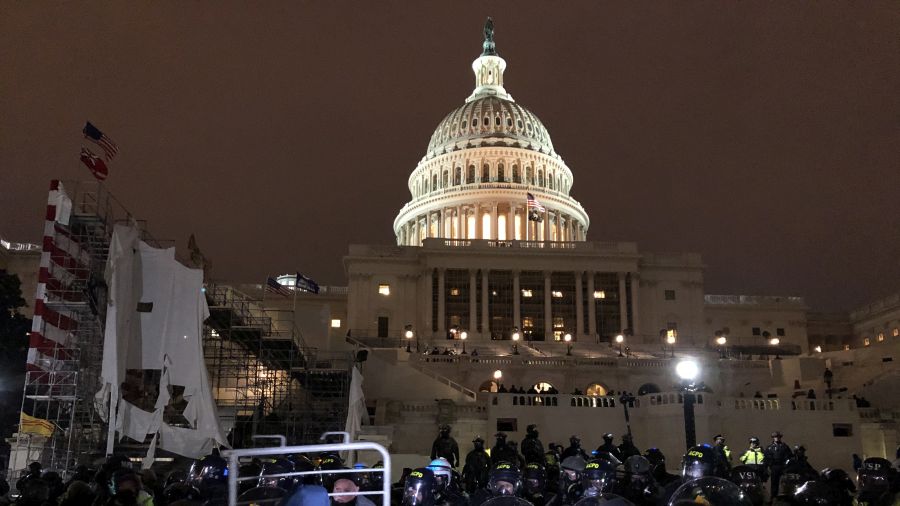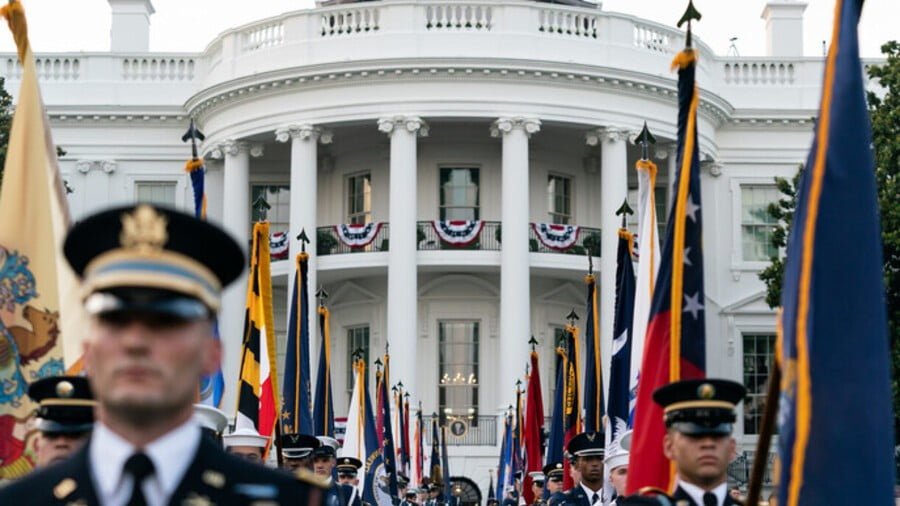Why People Don’t Trust the Mainstream Media
An article in the Washington Post about the January 6 protests at the Capitol goes a long way toward explaining why people do not trust the mainstream media. The article, written by a Post reporter named Mike DeBonis, focuses on allegations that the FBI infiltrated the ranks of the protestors and actually helped to incite them to illegally enter the Capitol and engage in mayhem after doing so.
The overall tone that DeBonis sets forth is one that is oftentimes found in the mainstream media when it comes to alleged wrongdoing by the federal government. The article has a mocking tone to it, suggesting that the people who are making this allegation are conspiracy theorists for actually believing that federal officials would do such a horrible thing.
There is a critical sentence in DeBonis’s article: “The FBI declined to comment.”
Why is that line important? Because there are two ways that a reporter can go when he is writing a story about this type of allegation.
On the one hand, he can mock and ridicule those who are making the allegation, pointing out that they haven’t produced any evidence to support their “unfounded claim.”
On the other hand, he can aggressively go after FBI officials and demand a definitive yes-or-no answer instead of simply settling for a “no comment” by the FBI and also engage in an aggressive investigative effort to determine whether there is evidence to support the allegation.
DeBonis chose the first route. But why? After all, a “no comment” answer by the FBI is about as incriminating as an answer can be, short of an outright admission of wrongdoing. That’s because if the FBI were not guilty of the wrongdoing, it would undoubtedly simply say, “The allegation is false.” The FBI clearly did not do that with its “no comment” answer. It’s “no comment” answer leaves open the possibility — perhaps even the likelihood — that the FBI was involved in wrongdoing.
DeBonis makes a big issue of out of the fact that the people who are making this allegation have not provided any evidence to support their allegation. But what people have pointed out is a similar course of conduct by the FBI in other cases, which would be enough to cause any reasonable person to assume that it might have engaged in the same course of conduct with respect to the January 6 protests.
For example, consider the case that involves the alleged kidnapping of Michigan Gov. Gretchen Whitmer. DeBonis is aware of that case because he links to an article from BuzzFeedNews.com about the case. That article alleges that the FBI played a major role in inducing the defendants in the case to commit the kidnapping. Even if what the FBI allegedly did wasn’t enough to support a defense of entrapment, its alleged actions are nonetheless enough to cause any reasonable citizen, including investigative journalists, concern.
But that’s not all. As journalist Glenn Greenwald has documented, the FBI has a long history of inciting people to commit acts of domestic terrorism. The idea is to incite people to commit crimes so that the FBI can then be praised and glorified for busting them up. See Greenwald’s July 24 article “FBI Using the Same Fear Tactic From the First War on Terror: Orchestrating its Own Terrorism Plots.” Also, see the July 31 article “Will More Media Bias Save Democracy?” by James Bovard.
Given the history of the FBI engaging in this type of misconduct, you would think that any journalist worth his salt would say, “I need to get to the bottom of this latest assertion. I need to know whether the FBI did the same thing here. Rather than mocking and ridiculing these people by pointing out that they have furnished no evidence to support their allegation, I need to do my job and go after the FBI to see if there is any evidence to support the allegation.”
Rather than do that, DeBonis goes off on the other track by implicitly assuming that the FBI would never do such a thing and implicitly assuming that those who are making the allegation are nothing more than “conspiracy theorists.”
That’s why so many people don’t trust the mainstream media.
This is not a recent phenomenon.
We can go all the way back to Operation Mockingbird, the CIA’s secret program in the 1960s and 1970s whose aim was to acquire CIA assets from within the mainstream press, whose secret job would be to come to the defense of the national-security establishment whenever necessary, including calling people “conspiracy theorists” whenever they allege wrongdoing on the part of CIA officials.
According to the Wikipedia entry on “Operation Mockingbird,”
In a 1977 Rolling Stone magazine article, “The CIA and the Media,” reporter Carl Bernstein expanded upon the Church Committee’s report and said that around 400 press members were considered intelligence assets by the CIA, including New York Times publisher Arthur Hays Sulzberger, columnist and political analyst Stewart Alsop and Time magazine. Bernstein documented the way in which overseas branches of major US news agencies had for many years served as the “eyes and ears” of Operation Mockingbird, which functioned to disseminate CIA propaganda through domestic US media.
The best example, of course, of the deference to the authority of the national-security establishment relates to the Kennedy assassination. Today, there are two separate worlds when it comes to that assassination: the world of the mainstream media and the world of Internet. They are two completely different worlds — actually, parallel universes.
On the Internet, it’s possible to find people analyzing, questioning, and challenging the official lone-nut theory of the case, pointing to the mountain of evidence, for example, that establishes that the national-security establishment conducted a fraudulent autopsy on President Kennedy’s body. (See my books The Kennedy Autopsy and The Kennedy Autopsy 2 as well as the recorded presentations at The Future of Freedom Foundation’s recent conference “The National Security State and the Kennedy Assassination.”
Not so in the mainstream press. It is considered verboten in the mainstream press for any reporter or commentator to challenge or question any aspect of the official lone-nut theory of the assassination. Woe to the reporter or commentator who does so. He will be looking for a new job posthaste — somewhere on the Internet.
In the December 6, 1963, issue of Life magazine, a well-known Life magazine reporter named Paul Mandel wrote an article about the assassination in which he claimed that the famous Zapruder film showed that the president had turned around to face the Texas School Book Depository. The president’s action, Mandel said, explained how it was that the president was shot in the throat.
No one could verify Mandel’s statement because Life magazine had purchased the film from Abraham Zapruder for $150,000, which in today’s dollars amounted to around $1.2 million. Life locked the film away, saying that it wanted to protect the American people from ever having to see such violence.
In 1969, Jim Garrison, the district attorney in New Orleans, brought a criminal prosecution against a man named Clay Shaw in which Garrison alleged that the Kennedy assassination was actually a sophisticated regime-change operation on the part of the U.S. national-security establishment. Garrison subpoenaed the Zapruder film from Life magazine and showed it in court. The film showed that the president had never turned around and faced the school book depository. By this time, of course, the official story revolved around the magic bullet theory, which posited that the president had actually been shot in the rear of the neck (i.e., not through the throat), with the bullet supposedly having come out the front (and then supposedly striking Gov. John Connally in multiple places, with the bullet magically ending up in a pristine condition.)
In other words, Mandel had lied, either intentionally or because someone at Life magazine had falsely told him that that’s what the film showed. There is no other conclusion that can be reached. There is no way that Mandel’s allegation could be construed to be an innocent mistake, because Life magazine had the film.
There is another interesting aspect to the saga. According to Wikipedia:
General Charles Douglas (C. D.) Jackson (March 16, 1902 – September 18, 1964) was a United States government propagandist and senior executive of Time Inc. As an expert on psychological warfare he served in the Office of Strategic Services in World War II and later as Special Assistant to the President in the Eisenhower administration…. After Abraham Zapruder took the famous film in Dallas on November 22, 1963, Jackson purchased it on behalf of Time/Life to “protect the integrity of the film.” Upon viewing it on Sunday morning, he ordered it locked in a vault at the Time/Life building in Manhattan.
In 1972 — three years after the Zapruder film was shown in the Shaw trial — Life magazine, which had been one of the most popular weekly magazines in history, ceased publication as a weekly. Some people said that it was because of the rising popularity of television. Another possibility is that people no longer trusted Life magazine.
For the past 25 years, the mainstream media has been losing readership and money. Some people blame it on the rising popularity of the Internet. Another possibility is that people no longer trust the mainstream media.







